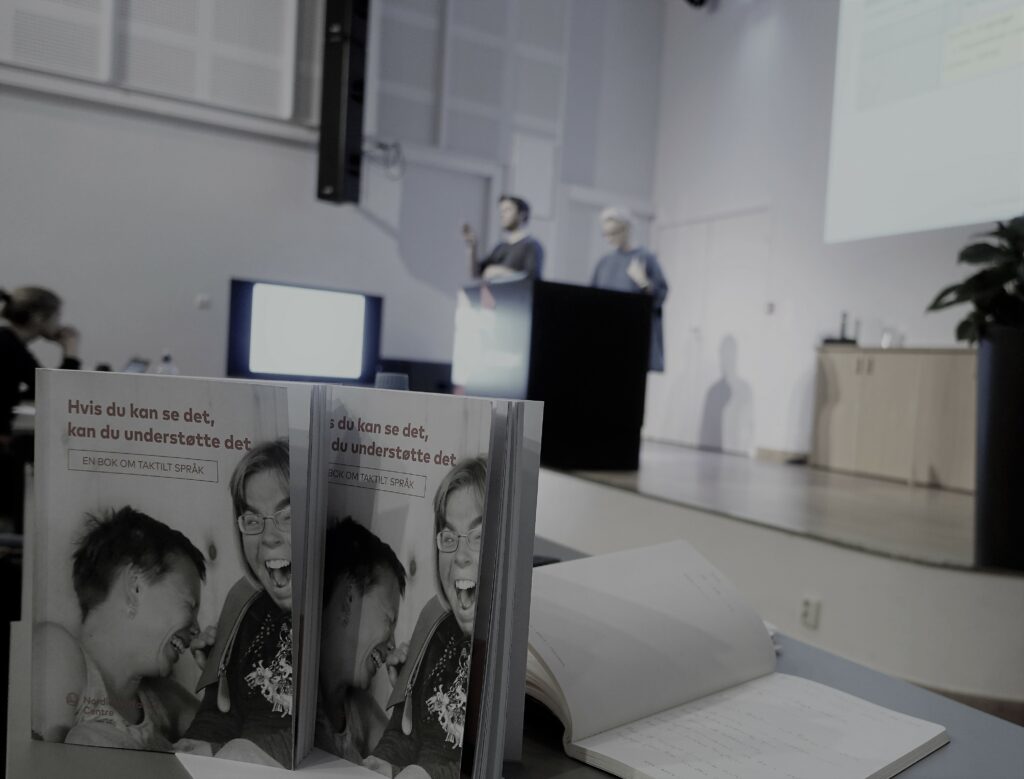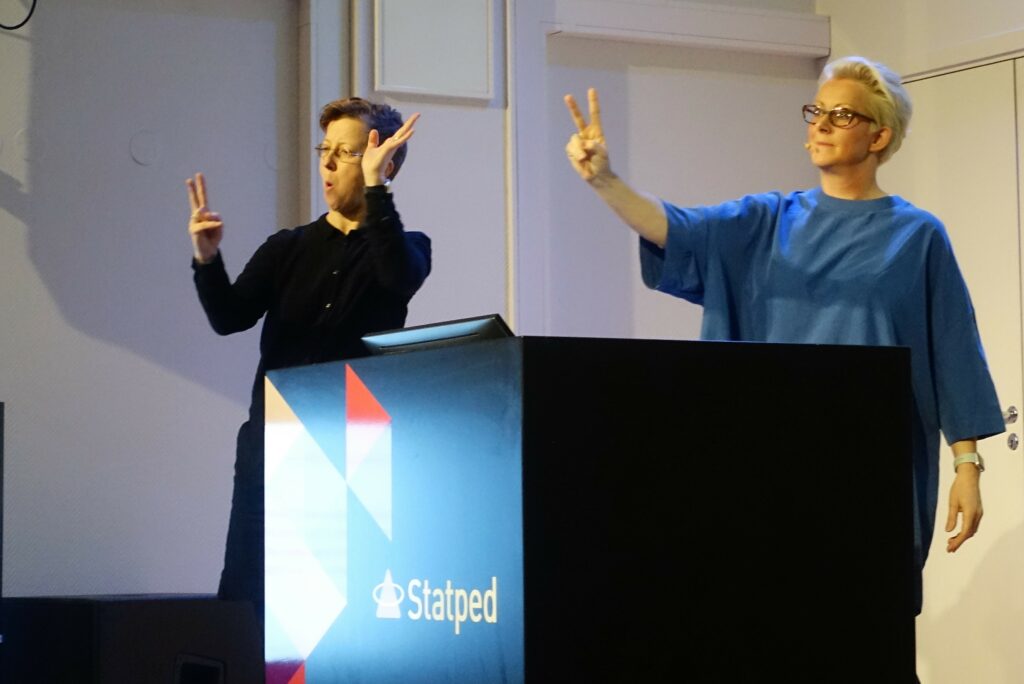If you can see it, you can support it - a book about tactile language

Professionals, closely linked to parental involvement in the Nordic region, have been collaborating on the topic of tactile linguistics since the DbI conference in Italy in 2009. Teams were formed in Sweden, Denmark and Norway, and we were eager and enthusiastic. The first seminars and workshops at the NVC in Dronninglund showed that there was a great deal of interest in the topic, and many contributed good questions and experiences from the field. The informal network also participated in workshops at DbI's conferences and shared experiences from the Nordic work on tactile linguistics as early as 2011.

The Nordic Network for Tactile Linguistics was formally established as a network in 2014, with Kari Schjøll Brede as coordinator, and in close co-operation with Maria Creutz at NVC, who had moved to Stockholm. On the agenda was the task of creating a Nordic booklet on linguistic practice in the Nordic countries.
It takes time to write a book that involves many authors. Denmark hosted the DbI conference in Aalborg in 2017. Many of us had assignments in connection with the conference, so the booklet was put on hold and matured a little in our brains at the same time.
Work was done on frameworks, target groups, definitions and approaches, and it took shape; it was to be a collection of articles. The network was to invite authors to write about topics relating to language development: embodiment / bodily expressions, multi-party conversations, assistive technology, meaningful activities, learning through tactile sensing and, not least, how we as good dialogue partners should be able to contribute and convey a cultural language in tactile form. It was to be a book aimed at employees and families of people with congenital deafblindness.
The work of inviting inspiring and knowledgeable authors began last autumn. 22 different authors were invited with different themes. At the same time, suggestions for other authors and topics were encouraged. Some dropped out, others were added. We had a deadline of 2 April. Only a few met it, but by August we had them all in - 19 good articles and enough to fill not just a booklet, but an entire book. There are authors from all the Nordic countries: a practical example from Finland, the theory of linguistic description of a language in tactile form from Iceland, and many aspects of language and good practice from Sweden, Denmark and Norway.

The editorial team, consisting of Maria Creutz, NVC, Sweden, Helle Buelund Selling, CDH, Denmark and Kari Schjøll Brede, Eikholt, Norway, got off to an intense start this summer, working on good translations, good language, good illustrations and much more. It's a good thing we have video conferencing facilities - otherwise the Nordic editorial work would have been considerably more costly and time-consuming.
The book launch took place at NVC's Bodily-Tactile Languaging Congenital Deafblindness seminar at Statped Hovseter on 5 December.
The Nordic Welfare Centre, Statped and the National Competence System for Deafblindness collaborated on an exciting seminar at Three of the book's authors presented their contributions in words, signs and pictures. There were around 30 attendees in the auditorium, who were engaged with questions and comments to the lecturers. The seminar was held in English, in order to reach out beyond the Scandinavian countries. The whole thing was streamed to 103 different "studios" in 16 different countries, from the Baltics to Canada. They took part in the chat and sent in questions and reflections that were read in the auditorium and to which the lecturers could also respond. It's great that new knowledge can be spread in such a well-functioning way.

Anne Nafstad introduced the day by showing how language in bodily-tactile modality should be part of partner competence. Language is a human activity, and she gave the floor to the day's speakers to gain more understanding of how language from the outside (cultural language) can meet the language that comes from within (children's own expressions). Gøran Forsgren talked about how signs evolve from an experience of something in the world to an iconic sign that we can find common meaning in. Caroline Lindstrøm showed how a young man with deafblindness has developed his bodily-tactile language over many years with good conversation partners and targeted and rich access to conversation partners who have seen and supported his language while at the same time giving him access to tactile body-coloured signs and hands that speak and listen. Johanne Godø presented findings after analysing conversations between a boy with deafblindness and an interlocutor with sign language as a first language. Finally, Camille Foote talked about language and translanguaging, a way of involving all the senses in language development. She showed combinations of different modalities and ways of using language. "You can describe a child's language linguistically even if they use different languages in different modalities to show what they are thinking about.
All four lecturers presented parts of their master's studies from communication and congenital deafblindness in Groningen.
The book is currently available in Scandinavian and can be ordered from NVC. It will be translated into English during 2019.
In 2019, the book will be translated into English and will have the opportunity to spread beyond the borders of the Nordic countries. It will be included in a poster presentation in Australia at the DbI World Conference in August 2019.
